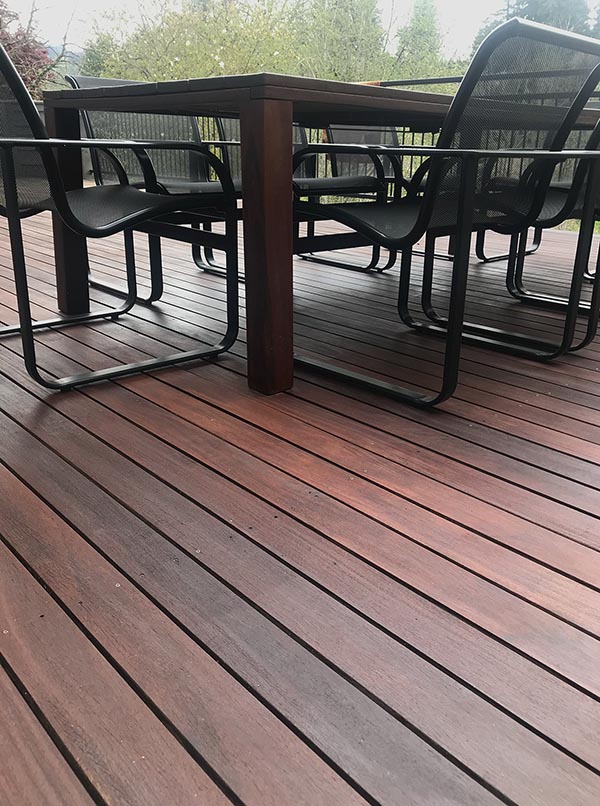Maintain and Shield: Release the Power of Fence Staining
Maintain and Shield: Release the Power of Fence Staining
Blog Article
Selecting the Right Discoloration for Your Fence: Tips and Factors To Consider
When it comes to enhancing the appearance and maintaining of your fencing, picking the appropriate tarnish is crucial. We will check out the various kinds of fencing discolorations, variables to consider prior to selecting a discolor, suggestions for preparing your fence for staining, and the differences between oil-based and water-based stains. Additionally, we will dig right into selecting the best discolor color to match your fencing and improve your outdoor space.
Understanding Different Kinds Of Fence Stains

On the various other hand, water-based discolorations are made from acrylic or latex and offer a much more refined shade to the timber. They create a safety movie externally of the wood, preventing wetness from permeating in and protecting against UV damage. Water-based spots are simpler to cleanse up and have a much faster drying out time compared to oil-based stains. They are also much less likely to fade or crack gradually.
Picking in between oil-based and water-based stains relies on different elements, including personal choice, the desired look, and the degree of upkeep called for. Oil-based discolorations are suggested for fence high-traffic areas or those continuously subjected to extreme climate condition. fence staining and sealing. Water-based discolorations, on the other hand, are a prominent choice for fences in houses where appearance and convenience of usage are very important
Comprehending the distinctions in between water-based and oil-based discolorations helps homeowners make an educated decision when picking the ideal discolor for their fence. Taking into consideration the particular needs of the fence, such as its area, direct exposure to sunlight, and preferred visual, will ensure that the selected tarnish supplies long-lasting defense and enhances the total charm of the fencing.
Variables to Think About Prior To Selecting a Discoloration

Different kinds of wood take in stains in a different way, resulting in differing levels of color strength and sturdiness. Additionally, certain timbers may be extra prone to problems like rot or insect infestation, which may impact the choice of discolor to shield and protect the fencing.
The environment and weather in your area ought to likewise be considered. If you stay in a location with rough winters or high moisture, you may need a stain that provides extra protection versus moisture and UV rays. Likewise, if your fence is subjected to guide sunshine for long periods, a stain with UV preventions can aid protect against fading and staining.
Last but not least, it's vital to consider your wanted visual. Different stains offer numerous shades and surfaces, allowing you to tailor the look of your fence (fence staining and sealing). Take into consideration the total design and style of your home, as well as any regional policies or property owner organization standards that may determine the acceptable tarnish colors
Tips for Preparing Your Fencing for Staining
To prepare your fencing for staining, beginning by completely cleaning the surface area using a light detergent and a pressure washer or scrub brush. Cleaning the fence is an essential action as it eliminates dust, gunk, and any kind of previous finishings that may hinder the discoloration process. Begin by moistening the fence with water and after that apply a mild cleaning agent utilizing a scrub brush or a pressure washing machine with a low-pressure setting. Rub the surface delicately, paying extra focus browse around this site to areas with persistent stains or mold and mildew. Wash the fence extensively with clean water to eliminate all traces of cleaning agent.
This action is critical as staining a damp or wet surface can lead to inadequate bond and an uneven finish. Make sure that the fence is totally dry before continuing with the discoloration procedure.
Prior to discoloration, evaluate the fencing for any type of damages, such as loosened boards or nails. This product aids to open up the wood pores, enabling the stain to penetrate extra properly and equally.

Contrasting Oil-Based and Water-Based Discolorations
When selecting a discolor for your fencing, it is necessary to compare the characteristics and advantages of oil-based and water-based stains. Both kinds of discolorations have their own advantages and considerations, so it is critical to understand the differences between them.
Oil-based spots are understood for their toughness and resistance to put on and tear. In addition, oil-based discolorations have a tendency to last longer than water-based discolorations, making them a preferred option for fencings.
On the various other hand, water-based discolorations are much more eco friendly and less complicated to cleanse up. They may not give the exact same level of defense as oil-based spots, specifically in rough weather condition conditions.
Eventually, the choice in between oil-based and water-based discolorations depends upon your specific demands and preferences. Take into consideration aspects such as resilience, environmental impact, and simplicity of application when making your choice. Consulting with a professional or seeking referrals from experts can additionally aid guarantee that you choose the ideal tarnish for your fence.
Picking the Right Stain Color for Your Fencing
The option of a suitable tarnish color for your fence is a crucial facet of enhancing its visual allure and complementing the general layout of your outdoor space (deck staining companies near me). The appropriate stain shade can transform a level, normal fence right into a striking centerpiece that includes depth and personality to your property
When picking a discolor shade for your fence, it is vital to consider the design and architecture of your home. Natural tones such as neutrals and browns can create a cozy and welcoming appearance if you have a classic or standard design home. On the other hand, if you have a modern or modern home, you may take into consideration opting for strong and vivid colors that make a statement.
An additional element to take into consideration is the natural environments of your residential or commercial property. If you have a great deal of plant, a stain color that matches the natural landscape, such as environment-friendlies or crimsons, can create a cohesive and harmonious appearance.
In addition, it's worth considering the maintenance needed for various stain colors. Lighter colors have a tendency to show dirt and put on more easily, while darker colors can hide flaws and need less regular touch-ups.
Ultimately, the option of discolor color for your fence ought to show your personal style and choices - deck staining. Make the effort to discover different choices and get in touch with with professionals if needed, to make certain that you pick the perfect stain color that improves the elegance and appeal of your fence
Conclusion
In verdict, when it comes to selecting the best discolor for your fencing, it is important to understand the various kinds of stains available and take into consideration elements such as sturdiness and desired look. Choosing the best tarnish shade can enhance the total appearances of your fencing.
We will discover the different kinds of fencing stains, elements to think about prior to choosing a tarnish, ideas for preparing your fence for discoloration, and the differences between water-based and oil-based spots.Differentiating in between oil-based and water-based discolorations is important when understanding different types of fencing stains. Water-based spots are easier to cleanse up and have a much faster drying time contrasted to oil-based discolorations. Furthermore, oil-based stains have a tendency to last longer than water-based discolorations, making them a prominent selection for fences.
In final thought, when it comes to picking the ideal stain for your fencing, it is essential to comprehend the various types of spots readily available and think about aspects such as resilience and preferred look.
Report this page